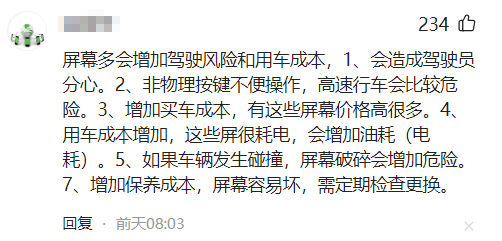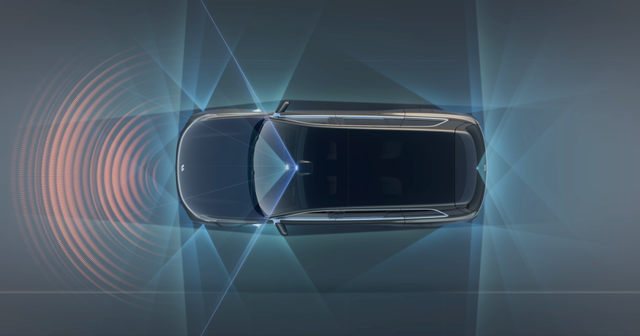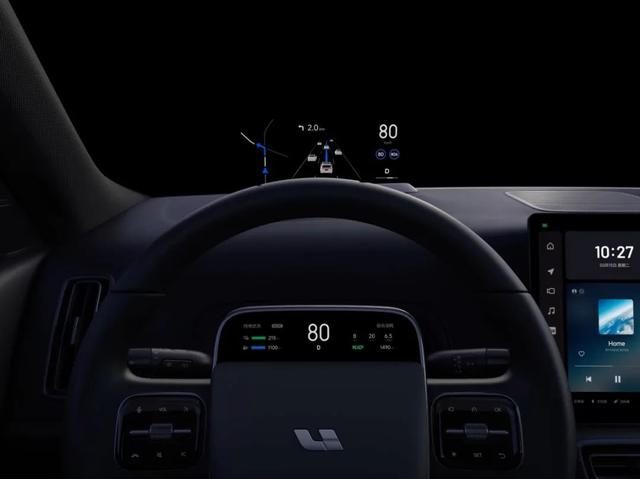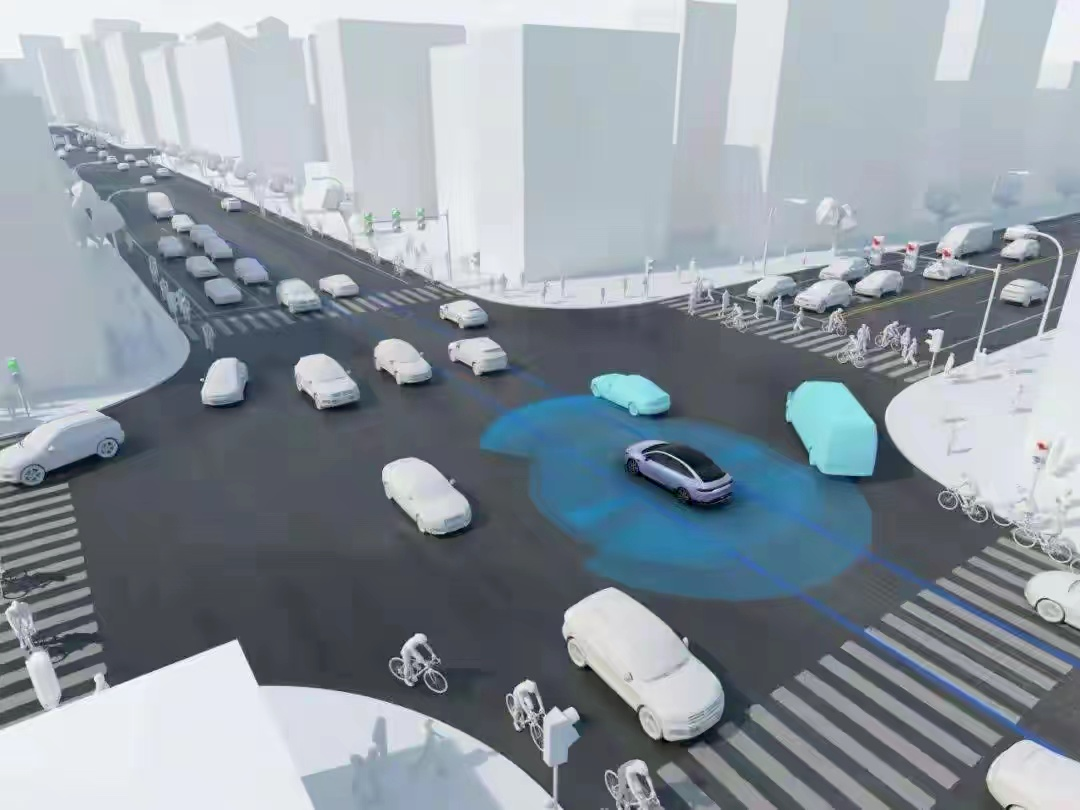With the development of smart cars and connected car technology, car dashboards are also being iteratively updated. Traditional buttons, knobs, and handles are gradually disappearing, to be replaced by large screens and the inclusion of smart technology.
Looking at new cars launched in recent years, assisted driving has become a trend in the development of smart cars. Perhaps touch screens, voice recognition, and gesture controls, among other new smart systems, will dominate car dashboards in the future.
For the upgrade to “intelligence,” new automakers have been talking about “subverting,” but they remain mostly in the conceptual stage. Car companies that have truly taken action have also attracted a lot of criticism.
The battle for “large screens,” who is right and who is wrong?
Not long ago, the Ideal ONE L9 caused a heated discussion about “the best SUV under 5 million for home use,” but also for the three 15.7-inch OLED screens with interactive screen functions on the central control screen, passenger screen, and roof entertainment screen, among other selling points. Even the steering wheel attracted “spitting” from netizens, who commented that the entire cabin was filled with a “screen” odor.
Although on the night of the new car launch, XPeng automobile’s CEO XPeng He sent his congratulations, “Congratulations on holding back a big move and wishing the new car a great sale.”
But later, in an interview, XPeng He said, “I am firmly opposed to having too many screens in a car. The basis for having too many screens is when there are too many people in the car. But for one car, the proportion of time spent by how many people, multiplied by a proportionality factor, and the input-output ratio of using different screens, makes little sense.”
What the speaker intended and the listener understood. XPeng He’s implicit meaning is that having too many screens is unnecessary, and enough is enough. His comments inevitably aroused suspicions about the Ideal ONE L9.
In fact, even before XPeng He, Li Bin, founder of NIO, stated that “there is actually no need for so many large screens in a car” when introducing the panoramic data cockpit with AR/VR technology loaded on the ET5.
At the time, Li Xiang immediately counterattacked: “Don’t easily define products that you haven’t even used. As a qualified product manager, before defining the product, make sure you have a grasp of the most basic VR theory and enough experience of use.”
Regarding the debate between “large screens” and “multiple screens”, netizens have different opinions, but judging from the comments, most supporters of He XPeng’s viewpoint believe that “playing games in the car, wouldn’t it cause motion sickness?” “Isn’t it great to have a big screen TV for gaming at home?” Regarding this, Ideal states that the L9 is designed to meet the potential needs of users that are hard to imagine even for themselves.
Even when it comes to the safety of the Ideal L9, some netizens have expressed doubts and listed a series of “evidence of guilt,” such as: more screens would increase driving risks and car usage costs, distracting drivers; non-physical buttons are difficult to control, posing danger during high-speed driving; a fine-tuned screen comes with a high price tag; having too many screens increases the rate of power consumption, thus increasing energy consumption; a broken screen increases danger particularly after a vehicle collision; screen repair time is related to maintenance costs and other related issues.

So, is the proliferation of in-car screens causing more harm than good?
Data shows that 75% of consumers would rather use the voice recognition feature of cars, 70% of car buyers would like to use the touch screen of the center console, and 69% of car buyers prefer the steering wheel control system. This survey reveals why car manufacturers are constantly transitioning from traditional buttons to touch screens, steering control systems, voice recognition, and gesture control systems.
Large screens have enormous potential in terms of technology and optimizing driving experiences, making it an integral part of modern car DNA. In fact, new cars nowadays are often not seen as posh without several large screens.
For example, last year’s LanTu FREE featured three 12.3-inch tri-screens; Mercedes EQS replaced physical buttons with three screens, with a total width of 1.41 meters, and two large screens measuring 12.3-inch on the back of the first two rows of seats. Even the rear speaker system and air conditioning adjustments have screen controls. However, the pioneer of large central control screens is still the 2021 Model S that uses a 17-inch LCD display, ditching the cumbersome physical buttons and integrating the music, navigation, gears, battery levels, and Bluetooth functions together.
From a product experience perspective, multiple screens can indeed bring higher entertainment and traveling experiences for passengers, allowing passengers to have various immersive entertainment options anytime, anywhere. However, over time, more car manufacturers are joining the competition of more screens, and problems are also arising.
For those “car loyalists” who cannot accept the development of in-car screens, their reasons are simple. They believe that removing physical buttons would increase the likelihood of misoperation, and the safety of operating screens is worse than that of physical buttons. In addition, the use of car touch screens can lead to problems such as lag, slow start-up, poor quality, etc.Add the issue of materials, for example, the car screen of Li Xiang ONE still uses LCD screens with low display pixels and low price, while Li Xiang L9 uses OLED screens, which have advantages in high contrast, wide viewing angles and fast response, but also have the disadvantage of short life, narrow temperature tolerance range, possible burn-in phenomenon, and increased maintenance costs.
DS’s chief designer Thierry Métroz believes that more and more screens will cause distractions for drivers, leading to driving accidents. Some industry insiders also pointed out that some car companies emphasize how in-car entertainment systems optimize the driving experience excessively, but neglect the safety issues that come with such systems.
Looking at it from another perspective, you will find that in-car screens are indeed more advanced and convenient than traditional physical buttons, such as human-machine interaction, intelligent assisted driving, and so on.
Taking Li Xiang L9 as an example, the front driving position of the Li Xiang L9 has a full-color HUD projection area, which has a large display area, will not obstruct the line of sight, and can better guarantee driving safety. Coupled with the Mini-LED and multi-touch technology of the safe driving interactive screen, it can clearly display necessary new car information. Meanwhile, the instrument panel achieves touch interaction, and the driver can safely and conveniently choose functions including driving mode with three 15.7-inch OLED screens, serving as vehicle central control screen, copilot entertainment screen, and rear cabin entertainment screen.
In terms of 3D spatial interaction design, Li Xiang L9 uses 3D TOF sensor and fusion algorithm to transform two-dimensional touch into three-dimensional space interaction. The central control screen, copilot entertainment screen, and rear cabin entertainment screen can implement different entertainment modes through the Type-C interface with Switch one-line direct projection.
The technical support behind this comes from Li Xiang L9’s family cabin standard two Qualcomm Snapdragon 8155 chips, combined with 24GB content and 256GB high-speed storage to form a computing platform, providing greater computing power for AI, software, and entertainment.
Viewing Li Xiang L9’s full LCD instrument display, central control screen, copilot entertainment screen, and vehicle control screen purely from size obviously has little meaning. Instead, technological, practical, and safety aspects are what people care about.
#
Technology needs to stand the test.
Although Li Xiang and He XPeng have different views on “big screens”, their attitudes are consistent in terms of intelligent assisted driving.From the perspective of usage scenario, in the research and development of advanced autonomous driving technology, compared with the driving scenarios of short-distance, medium and low-speed on urban roads, the road conditions are relatively simple and the demand is more widespread. The subdivision scenario represented by long-distance driving on highways has become the field where automakers are competing to layout.
Ideally, the view of Ideal Automotive on the auxiliary driving function is that they believe that the auxiliary driving function should be standard, and the understanding between auxiliary driving and autonomous driving should be clearer.
The AD Max intelligent driving system of Ideal L9 mainly embodies in two aspects.
The first is the full self-research intelligent driving algorithm. The development of Ideal L9 is based on “everything is for safety”, which meets the requirements of China’s road environment. Without discussing hardware such as cameras, the “intelligent driving algorithm” of AD Max uses the “BEV fusion algorithm” and uses “pure vision” for motion prediction. In the case of dark and strong light, it can ensure the accuracy of the system’s environmental perception and help vehicles improve the recognition of static and irregular obstacles.

The second is human-machine co-driving. Based on the intelligent driving capability, Ideal L9 needs to use the dashboard to display information directly and clearly, so that the driver can easily and conveniently control the information display and driving-related functions. Therefore, one of the large HUD flat viewing display systems of Ideal L9, with a size of 13.35 inches, is used to realize intelligent driving interaction functions. Because the biggest advantage of HUD is that the driver can view relevant driving information without transferring their gaze and ensure driving safety, each screen has its own duties.

He XPeng believes that with the improvement of the comprehensive ability of automatic assisted driving, autonomous driving will be the core point of user decision-making in the near future.
According to XPeng Motors, NGP, the full name of “NGP Automatic Navigation Assistance Driving”, is an autonomous driving assistance function developed by XPeng Motors based on localized traffic scenarios. It is equipped on XPeng P7 with XPILOT 3.0 system and can achieve multiple functions such as entering the ramp, lane centering, and automatic lane changing.
 From the perspective of performance, XPeng NGP will choose the fast lane first when driving on highways, and it will better deal with frequently occurring scenes, such as identifying obstacles and changing lanes due to overtaking from surrounding lanes. In addition, it is supported by advanced driving assistance maps, GPS, RTK, and other technologies, which can better achieve lane-level positioning.
From the perspective of performance, XPeng NGP will choose the fast lane first when driving on highways, and it will better deal with frequently occurring scenes, such as identifying obstacles and changing lanes due to overtaking from surrounding lanes. In addition, it is supported by advanced driving assistance maps, GPS, RTK, and other technologies, which can better achieve lane-level positioning.
Recently, XPeng released a video teaser of “XPeng P5 equipped with city NGP engineering version automatic driving assistance system” on his personal social media platform. It was expected that XPeng would praise his own NGP automatic navigation assistance system, but he said that the current city NGP automatic driving assistance system is not intelligent enough. “It should turn right, but it doesn’t,” “the experience is not good,” “the actual logic is incorrect,” and other issues.
In response to this, netizens expressed that being aware of the problem itself is also a kind of progress. Some netizens also indicated that it may be a reverse hype. In fact, regardless of whether it is hype or a real test drive experience, the core points are all around “intelligence” and “safety.”
Finally
For the automotive industry, intelligence is the key to company development. The software, data, and algorithms of intelligent driving are all hardware technologies driving the next generation of software.
Earlier, it was Tesla that added the big screen idea to the car through “innovation”. At that time, Musk said that when the automatic driving technology matures in the future, passengers can choose more entertainment designs.
Some automakers, however, have inverted the technology concept. They put the application of in-car games and “third spaces” for intelligent cabins ahead of automatic driving. Although some automakers have realized the problem and adjusted the entertainment system to the back seat to minimize the risk of accidents, there is still a risk of distracting the driver’s attention.
Undeniably, from the initial physical buttons and touch screens to the current voice, gesture interaction, and future multimodal interaction, emotional interaction, and intelligent cabins, they have all become smarter and more active. In the short term, multi-screens will still be the mainstream.
However, those so-called “innovations” and “subversions” are not stacking high-tech things together, but are based on products that meet the corresponding vehicle regulatory requirements, obtain functional safety certification, and achieve technological breakthroughs.
Therefore, as a new product of the times used to improve the user experience, new technologies, whether they are large screens or intelligent driving assistance, do have shortcomings and safety risks that need to be improved.
As two popular product managers, Li Xiang and XPeng’s intelligent warfare, although it has some hype, it is indeed helpful in promoting the improvement of China’s intelligent electric vehicle products and ultimately benefiting consumers.
This article is a translation by ChatGPT of a Chinese report from 42HOW. If you have any questions about it, please email bd@42how.com.
